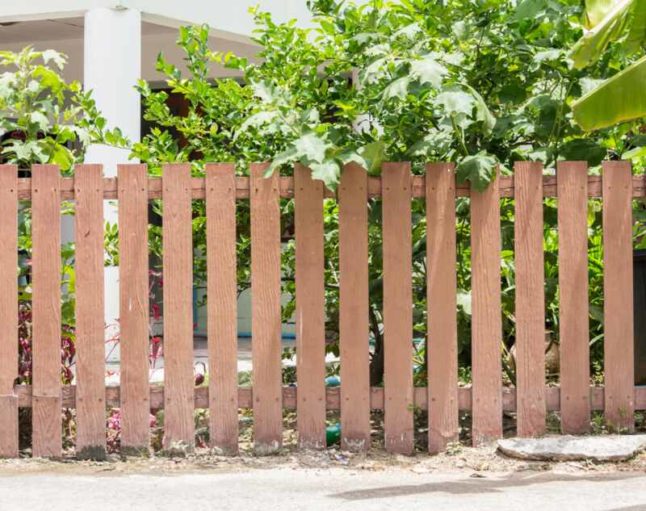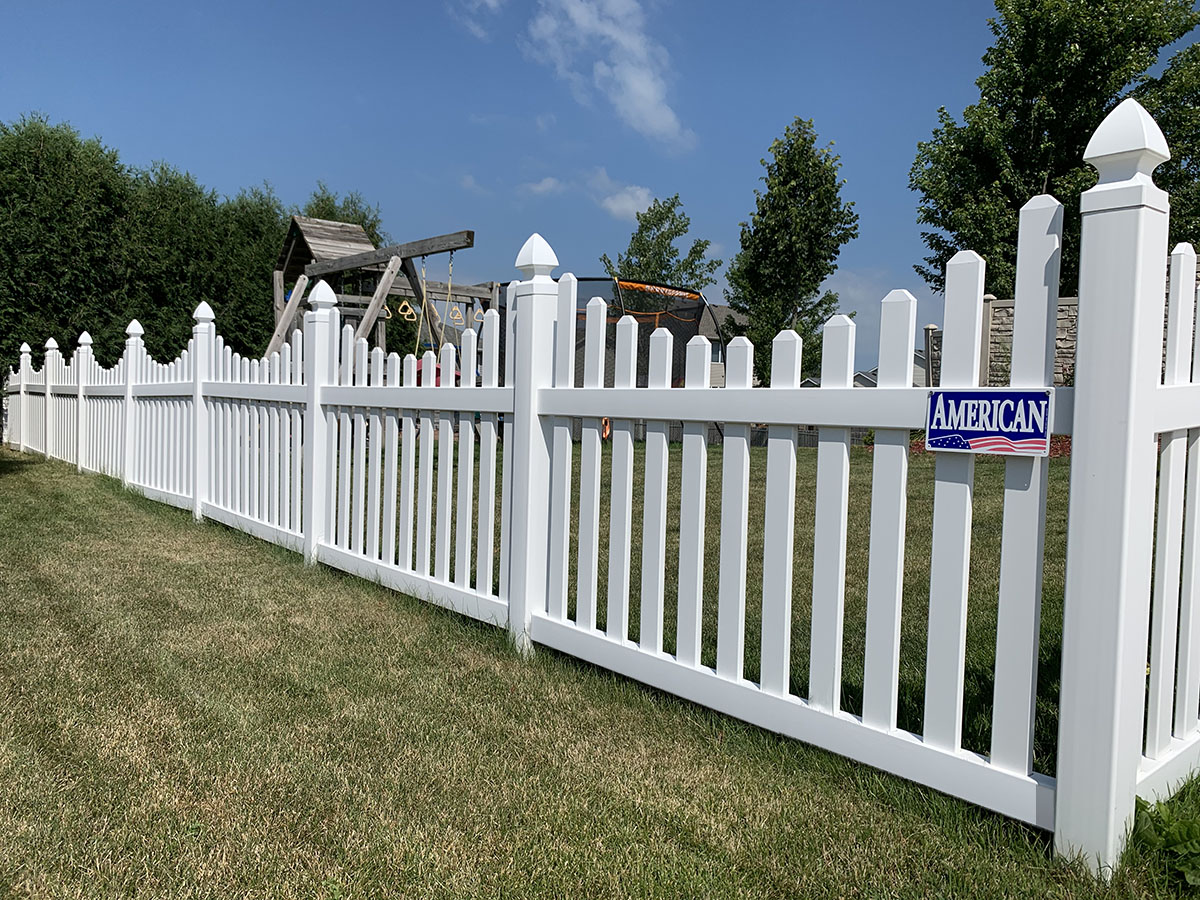All Categories
Featured
Setting up a fence on sloped or irregular terrain may feel like an intricate job, yet with the right strategies, it's totally possible to achieve a gorgeous and practical outcome. Whether you're managing a steep slope or a light slope, there are various setup methods to fit your demands. Here's everything you need to find out about setting up a fencing on sloped terrain.
Difficulties of Setting Up a Fence on Sloped Surface. Uneven or sloped surface can develop some challenges throughout fence installment, especially when it comes to making sure the fence continues to be level and protect. The primary problem is making certain that the fence doesn't look misaligned or end up being unsteady over time. A correctly mounted fencing on sloped land needs the right strategy to keep both structural integrity and visual charm. Without cautious consideration, an incorrectly installed fence might bring about unequal panels, drooping, and even damages from wind or weather.
![]()
Finest Fencing Techniques for Sloped Surface. When it concerns sloped surface, 2 primary installation methods are commonly utilized: the step method and the rack approach.
In this style, each section of the fencing is "stepped" to adhere to the terrain's incline. The specific panels are put at various heights to match the slope of the land, developing a stair-step effect across the length of the fence.
The action installation technique functions well with products such as plastic, metal, and timber, and it's a relatively simple installment process. It might leave gaps at the bottom of the fence in some locations, depending on the size of the incline.
Rack Setup Approach For steeper slopes, a racked installation may be the better choice. This technique permits the fence panels to adhere to the natural incline of the land without stepping. In a racked setup, the panels are set up in a continual line, yet they are gotten used to accommodate the slope. This provides a smoother, more smooth appearance contrasted to the stepped style.
A racked installment ensures that the fencing preserves a constant height throughout its size while still adapting to the incline. This approach is particularly suited for chain-link or functioned iron fences, yet can additionally work well with wood or plastic fences that are versatile sufficient to get used to the surface.
Selecting the Right Secure Fencing Product for Sloped Land. The choice of material plays a considerable role in how well the fence will carry out on irregular ground. Some products are much more versatile to sloped terrain than others, so it is essential to choose wisely.
Timber Fencing: Wood is a flexible material and works well for both tipped and racked setups. It can be tailored to fit any type of incline, though it needs routine upkeep to avoid degeneration, especially on unequal terrain where dampness buildup can be a problem.
Plastic Secure fencing: Vinyl fences are durable, low-maintenance, and ideal for both tipped and racked installments. Due to the fact that plastic is a rigid product, it may not be as versatile to steep inclines, but it still gives a smooth, continual line when set up correctly.
Steel Fencing (Chain-Link or Wrought Iron): Steel fences like chain-link or wrought iron are ideal for sloped surface due to the fact that they can be readjusted to comply with the land's all-natural slope. Chain-link is especially versatile and can be installed in such a way that enables the fencing to follow the terrain's slope without creating gaps.
Composite Fence: Composite fences, made from a mix of timber fibers and plastic, are additionally a fantastic alternative for sloped locations. These fencings are durable, weather-resistant, and can be tailored for different kinds of terrain.
How to Prepare for Installment. Prior to beginning a fencing setup on unequal surface, it's necessary to prepare the residential or commercial property correctly. Right here are a few actions to consider:
Examine the Incline: Begin by measuring the slope of the land. Utilize a level or a gauging tape to determine the slope's severity. This will assist you choose the proper installation technique and products.
Clear the Location: Get rid of any barriers such as rocks, trees, or bushes from the area where the fencing will be installed. This will certainly guarantee smooth installment and prevent damages to the fence or the bordering landscape.
Inspect Neighborhood Rules: Make Certain that you understand any type of local structure codes or laws for fencing setups. Some areas have details regulations relating to the height of fencings, trouble demands, or the kinds of materials permitted.
Pick the Right Fencing Type: Based upon your incline and the look you desire, select the ideal materials and installment method. Wood, vinyl, and steel all have their advantages, but you require to choose the one that fits your particular surface and aesthetic goals.
![]()
Expert Setup vs. Do It Yourself. While it is feasible to set up a fence on sloped or uneven terrain yourself, it might be difficult, particularly for steep slopes or larger locations. Employing an expert fencing installer can guarantee that the fencing is appropriately aligned, steady, and resilient. Specialists likewise have the experience to analyze the land, utilize the suitable installation techniques, and guarantee that your fencing fulfills neighborhood building codes.
Conclusion. Setting up a fencing on sloped or irregular surface is absolutely possible with the right methods, products, and devices. Whether you go with a step or racked setup, or pick one of the most appropriate fence product, making certain that the fencing adheres to the contours of the land while remaining steady is vital. Putting in the time to evaluate your residential or commercial property, pick the right products, and potentially working with a professional can lead to a perfectly mounted fencing that includes both personal privacy and curb interest your property.
Difficulties of Setting Up a Fence on Sloped Surface. Uneven or sloped surface can develop some challenges throughout fence installment, especially when it comes to making sure the fence continues to be level and protect. The primary problem is making certain that the fence doesn't look misaligned or end up being unsteady over time. A correctly mounted fencing on sloped land needs the right strategy to keep both structural integrity and visual charm. Without cautious consideration, an incorrectly installed fence might bring about unequal panels, drooping, and even damages from wind or weather.

Finest Fencing Techniques for Sloped Surface. When it concerns sloped surface, 2 primary installation methods are commonly utilized: the step method and the rack approach.
In this style, each section of the fencing is "stepped" to adhere to the terrain's incline. The specific panels are put at various heights to match the slope of the land, developing a stair-step effect across the length of the fence.
The action installation technique functions well with products such as plastic, metal, and timber, and it's a relatively simple installment process. It might leave gaps at the bottom of the fence in some locations, depending on the size of the incline.
Rack Setup Approach For steeper slopes, a racked installation may be the better choice. This technique permits the fence panels to adhere to the natural incline of the land without stepping. In a racked setup, the panels are set up in a continual line, yet they are gotten used to accommodate the slope. This provides a smoother, more smooth appearance contrasted to the stepped style.
A racked installment ensures that the fencing preserves a constant height throughout its size while still adapting to the incline. This approach is particularly suited for chain-link or functioned iron fences, yet can additionally work well with wood or plastic fences that are versatile sufficient to get used to the surface.
Selecting the Right Secure Fencing Product for Sloped Land. The choice of material plays a considerable role in how well the fence will carry out on irregular ground. Some products are much more versatile to sloped terrain than others, so it is essential to choose wisely.
Timber Fencing: Wood is a flexible material and works well for both tipped and racked setups. It can be tailored to fit any type of incline, though it needs routine upkeep to avoid degeneration, especially on unequal terrain where dampness buildup can be a problem.
Plastic Secure fencing: Vinyl fences are durable, low-maintenance, and ideal for both tipped and racked installments. Due to the fact that plastic is a rigid product, it may not be as versatile to steep inclines, but it still gives a smooth, continual line when set up correctly.
Steel Fencing (Chain-Link or Wrought Iron): Steel fences like chain-link or wrought iron are ideal for sloped surface due to the fact that they can be readjusted to comply with the land's all-natural slope. Chain-link is especially versatile and can be installed in such a way that enables the fencing to follow the terrain's slope without creating gaps.
Composite Fence: Composite fences, made from a mix of timber fibers and plastic, are additionally a fantastic alternative for sloped locations. These fencings are durable, weather-resistant, and can be tailored for different kinds of terrain.
How to Prepare for Installment. Prior to beginning a fencing setup on unequal surface, it's necessary to prepare the residential or commercial property correctly. Right here are a few actions to consider:
Examine the Incline: Begin by measuring the slope of the land. Utilize a level or a gauging tape to determine the slope's severity. This will assist you choose the proper installation technique and products.
Clear the Location: Get rid of any barriers such as rocks, trees, or bushes from the area where the fencing will be installed. This will certainly guarantee smooth installment and prevent damages to the fence or the bordering landscape.
Inspect Neighborhood Rules: Make Certain that you understand any type of local structure codes or laws for fencing setups. Some areas have details regulations relating to the height of fencings, trouble demands, or the kinds of materials permitted.
Pick the Right Fencing Type: Based upon your incline and the look you desire, select the ideal materials and installment method. Wood, vinyl, and steel all have their advantages, but you require to choose the one that fits your particular surface and aesthetic goals.

Expert Setup vs. Do It Yourself. While it is feasible to set up a fence on sloped or uneven terrain yourself, it might be difficult, particularly for steep slopes or larger locations. Employing an expert fencing installer can guarantee that the fencing is appropriately aligned, steady, and resilient. Specialists likewise have the experience to analyze the land, utilize the suitable installation techniques, and guarantee that your fencing fulfills neighborhood building codes.
Conclusion. Setting up a fencing on sloped or irregular surface is absolutely possible with the right methods, products, and devices. Whether you go with a step or racked setup, or pick one of the most appropriate fence product, making certain that the fencing adheres to the contours of the land while remaining steady is vital. Putting in the time to evaluate your residential or commercial property, pick the right products, and potentially working with a professional can lead to a perfectly mounted fencing that includes both personal privacy and curb interest your property.
Latest Posts
Customized Wealth Monitoring with WyHy Federal Credit Scores Union
Published Apr 18, 25
1 min read
Why Pick WyHy Fast Trac Interest-bearing Accounts
Published Apr 18, 25
1 min read
Preventative Maintenance at Montclare Auto Repair: Protect Your Vehicle in Top Shape
Published Apr 18, 25
2 min read
More
Latest Posts
Customized Wealth Monitoring with WyHy Federal Credit Scores Union
Published Apr 18, 25
1 min read
Why Pick WyHy Fast Trac Interest-bearing Accounts
Published Apr 18, 25
1 min read
Preventative Maintenance at Montclare Auto Repair: Protect Your Vehicle in Top Shape
Published Apr 18, 25
2 min read